(AP Photo/Gregory Bull)
(AP Photo/Gregory Bull)
What should we make of the latest batch of data released by U.S. Customs and Border Protection (CBP), regarding migrants at the border through April?
Here are updated versions of some WOLA graphics, using official data, that put those numbers in context. So: as this new data suggests—
1.) The proportion of kids and families being apprehended at the border just keeps growing.
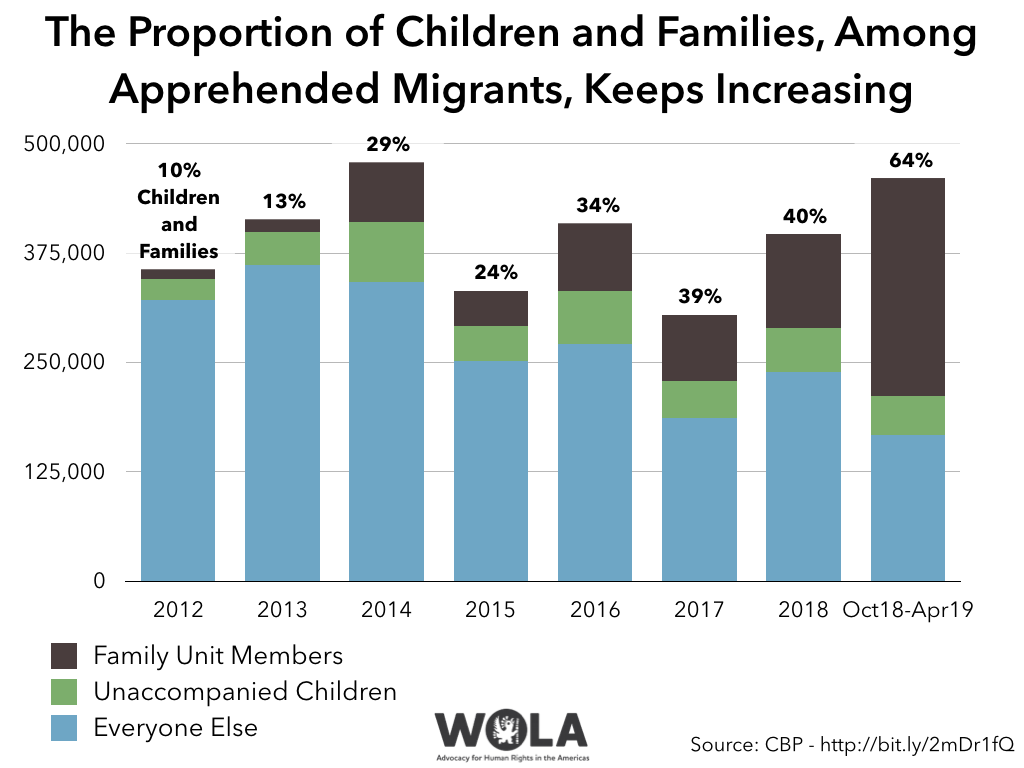
An incredible 68 percent of all those apprehended at the U.S.-Mexico border last month were kids and families. That’s more than two out of every three people. Bear in mind that, prior to 2012, the proportion of children and families among apprehended migrants never peaked higher than 10 percent.
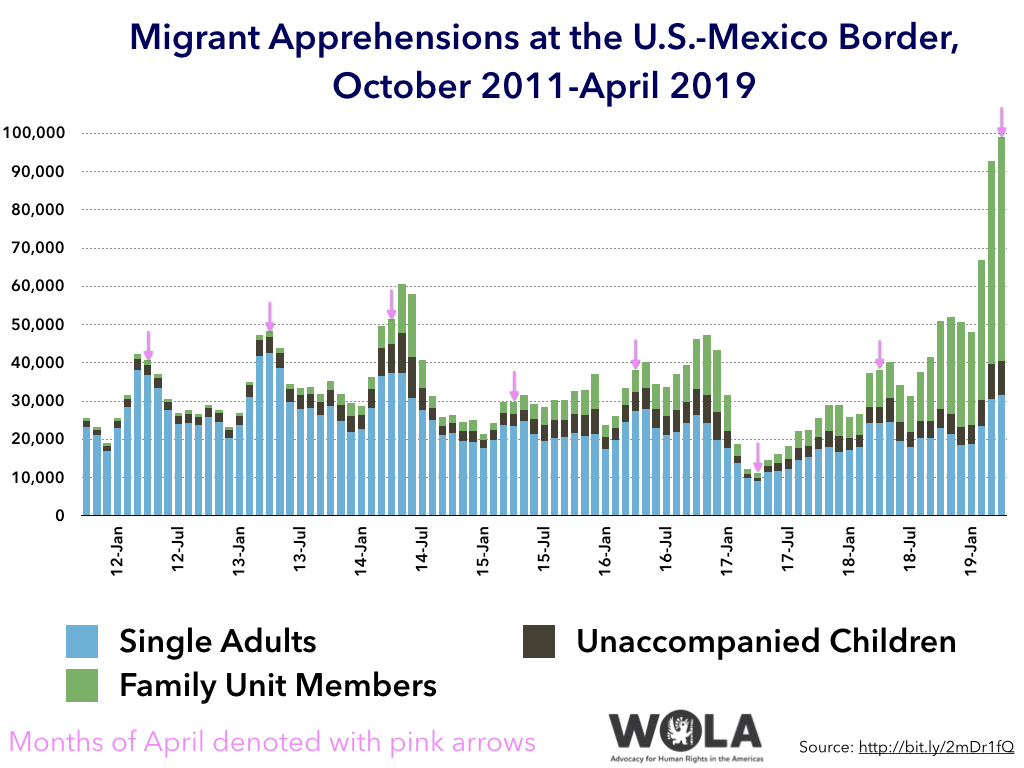
The current wave of kids and families dwarfs previous waves seen in 2014 and 2016 waves. So far this year, 64 percent of all those apprehended at the U.S.-Mexico border were children and families.
This is a stunningly rapid transformation of traditional migration patterns at the U.S.-Mexico border. And it is not a temporary problem that is going to disappear by bulking up security along the border.
As WOLA has stated, this new reality of migration at the border requires a fundamental rethinking of how to manage our border and migration. Our policymakers need to adapt and adjust (here’s some ideas for they can do so).
Indeed, May apprehension figures could be higher than those seen in April. However, typically the summer months see a drop in the number of migrants apprehended at the border, because fewer will risk making the journey through the desert heat.
2.) “Metering” at ports of entry is draconian. For 11 months now, CBP has held the number of undocumented people who can present themselves at ports of entry, whether for asylum or any other purpose, to about 10,000 per month—half of them kids and families. (See WOLA’s report on challenges faced by asylum seekers at ports of entry).
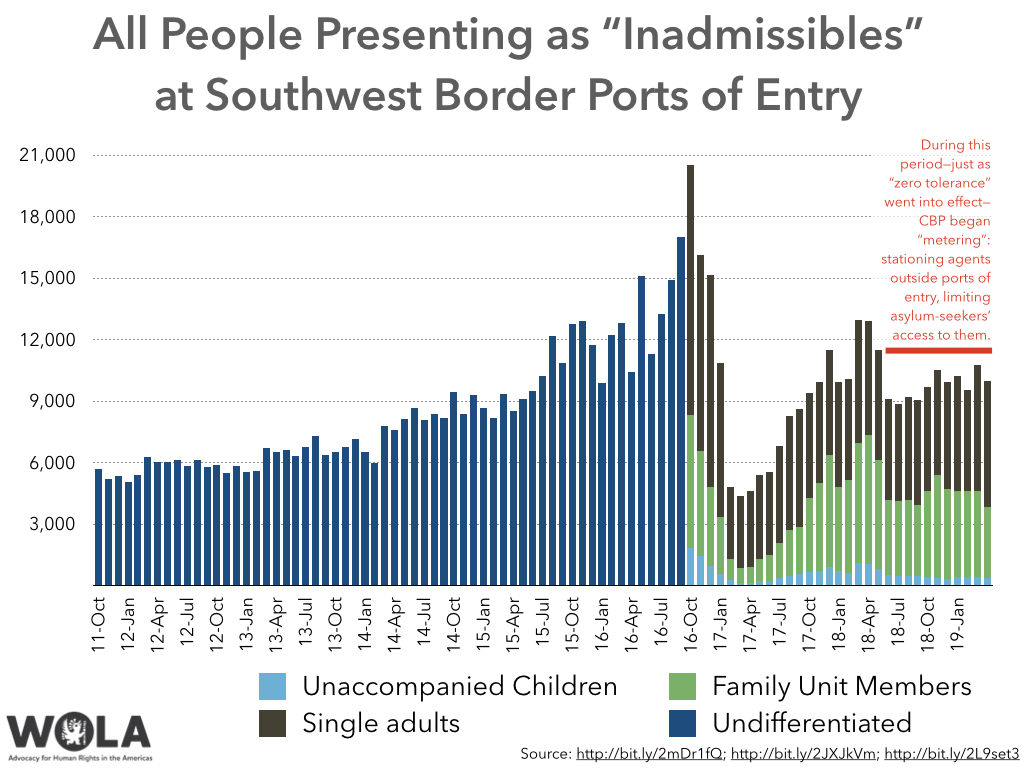
However, between March to April, the number of kids and families allowed to present at ports of entry actually dropped 18 percent from March to April.
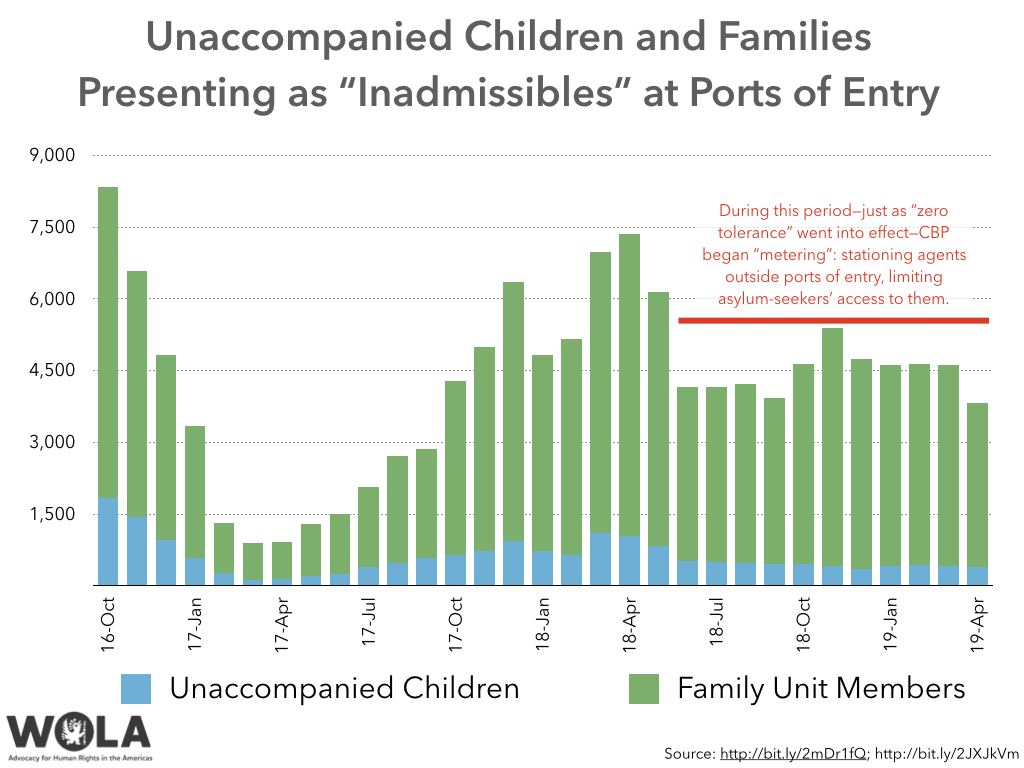
That’s stunning at a time of record arrivals between ports of entry. It seems evident that as a result of “metering,” people are being incentivized to make their asylum claims “improperly” (entering the United States without inspection, between the ports of entry).
3.) The number of Cubans presenting themselves at U.S. ports of entry is rising dramatically. Cubans were fully a quarter of those allowed to present at the ports of entry in April. The number of Cubans has doubled since February, and is now half what it was before the “wet foot dry foot” policy ended in January 2017.
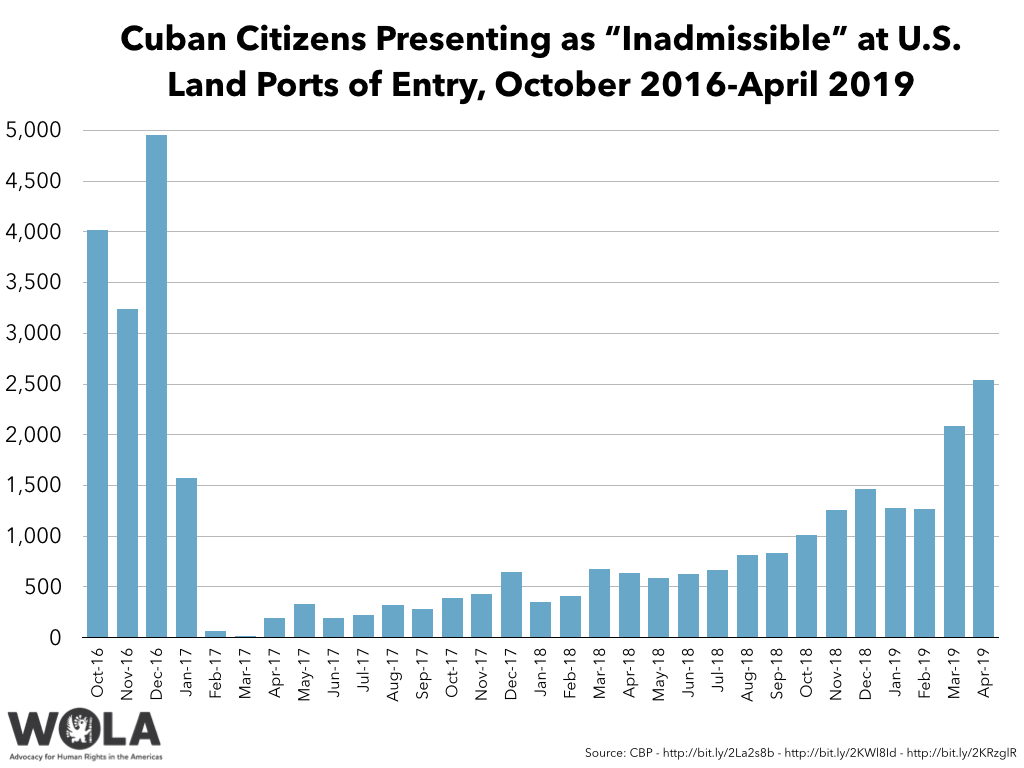
4.) The number of single adults being apprehended at the border are still pretty flat. Numbers of single adults are still well below what was the norm as recently as 2012-14.
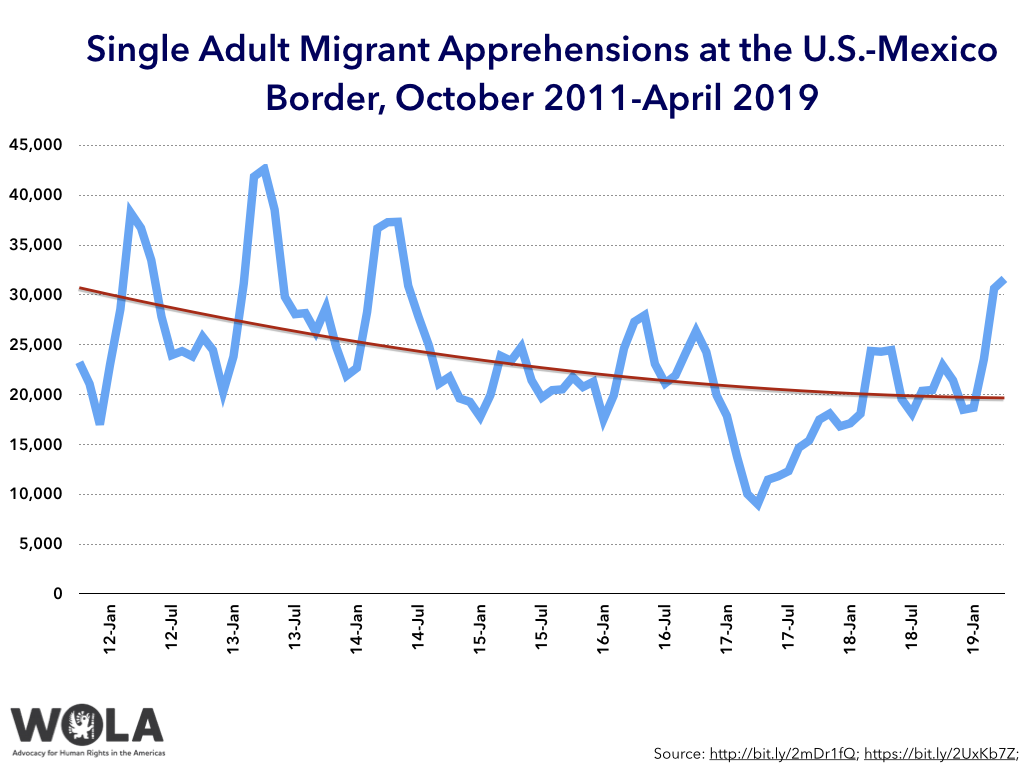
5.) The number of families arriving from Guatemala is leveling off. That means the increased number of families being apprehended at the border this month is coming from elsewhere, not Guatemala.
However, the country remains the number-one country for child and family arrivals.
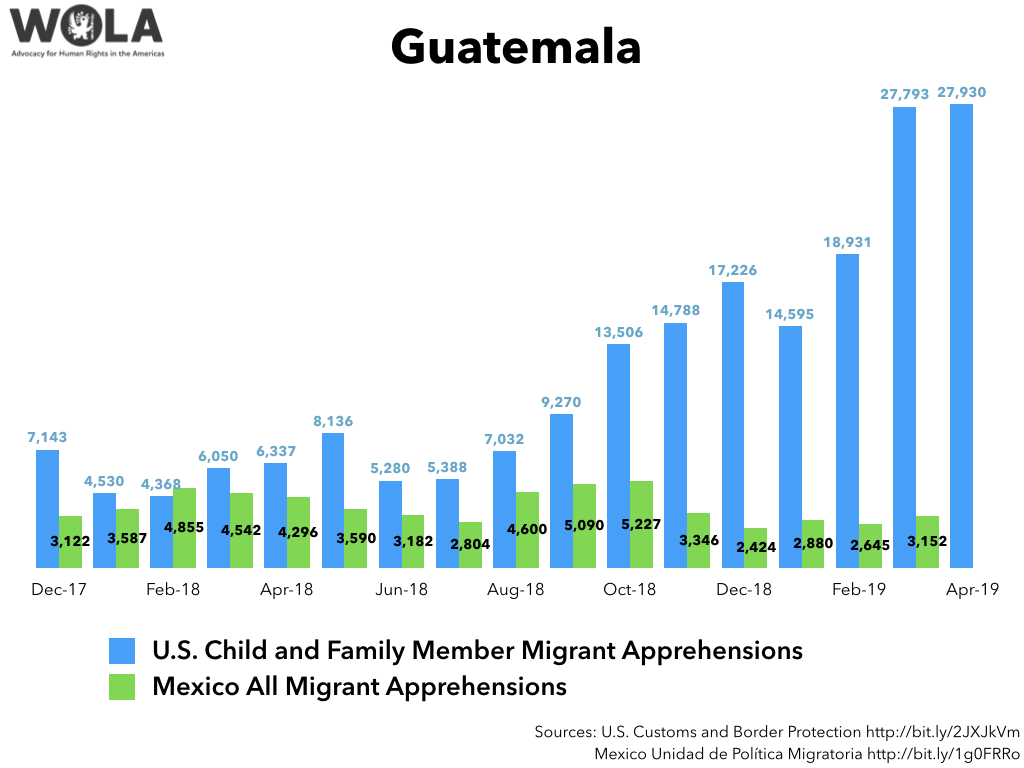
Honduras ranks second in terms of child and family arrivals.
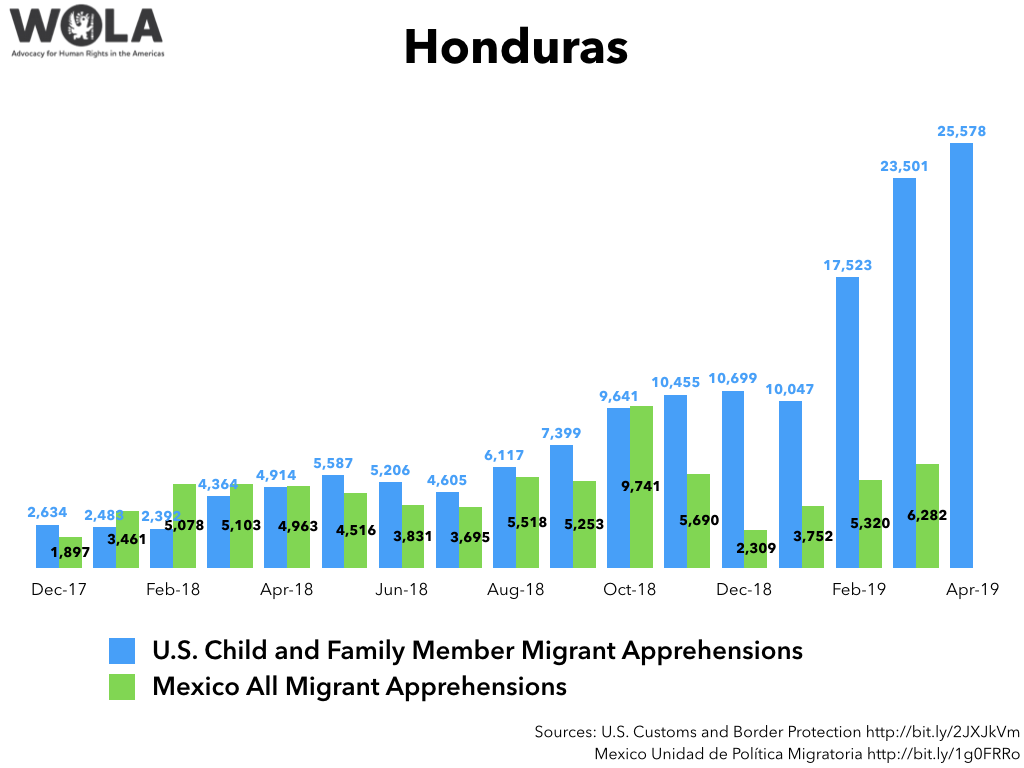
However, the number of arrivals from El Salvador is growing fast.
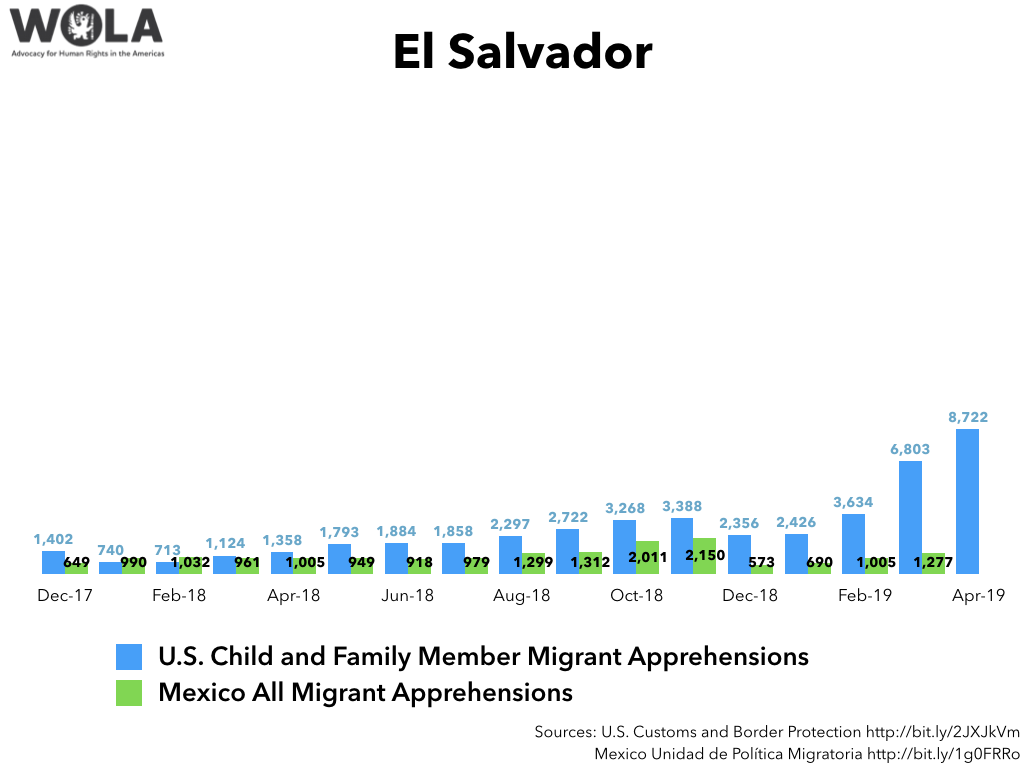
Many of the other children and families apprehended at the U.S.-Mexico border originate from countries other than Mexico and Central America’s Northern Triangle. Does this include possibly increased numbers of Nicaraguans fleeing instability in their country? Cubans? Venezuelans? It’s not clear.
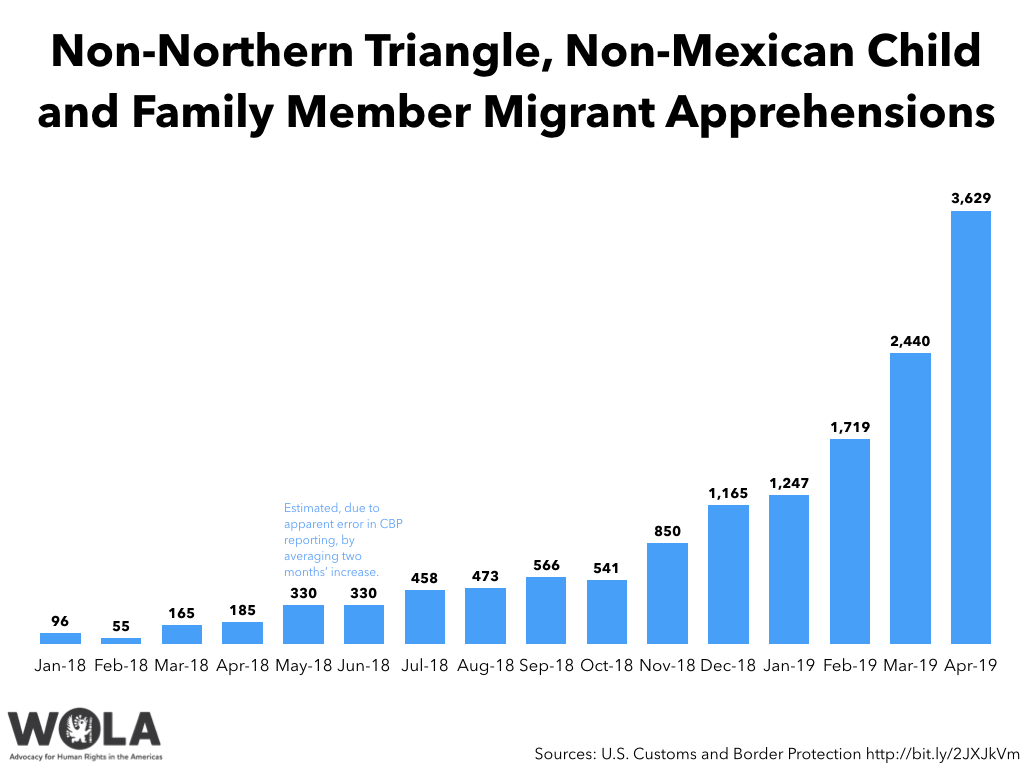
Elyssa Pachico contributed to this article.